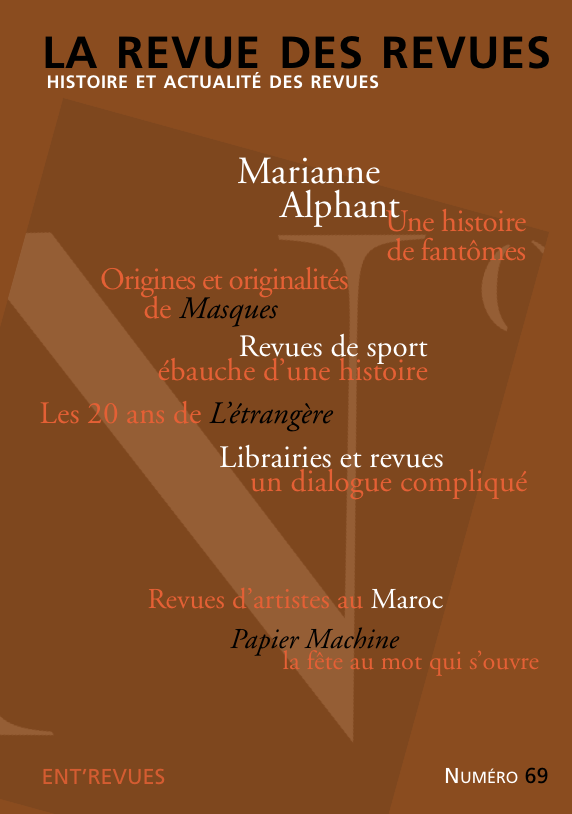par Frédéric Gai
2023, in La Revue des revues no 69
Entre le milieu du XIXe siècle et l’entre-deux guerres, au cœur de l’émergence et du développement d’une culture du divertissement, l’essor de la presse sportive opère la jonction entre information et corps en spectacle : les périodiques sportifs exaltent la performance et la confrontation des corps, dans leurs efforts et leur trivialité. Une myriade d’hebdomadaires consacrés à la diversité des sports pullule avant de se resserrer autour de quelques titres. Dans une deuxième phase, des magazines riches de reportages, d’analyses et photographies ouvrent des espaces de légitimation du sport. Pour autant, travail réflexif des revues et pratique du sport en son spectacle restent encore deux univers incommensurables. Au cours des dernières décennies, entre regard décalé – So foot et sa galaxie –, journalisme « au long cours »*, pensée critique, hybridation des formes – de la revue illustrée au mook –, rares approches littéraires et visées universitaires, l’exercice du sport et celui de la revue ne cessent de se chercher un terrain d’entente : celui de la légitimité culturelle partagée.
* = slow journalism
Call and dummy run. A draft history of sports periodicals
Between the middle of the 19th century and the interwar period, at the heart of the emergence and development of a culture of entertainment, the rise of the sports press brought together information and the body in the form of a spectacle: sports periodicals exalted the performance and confrontation of bodies, both in their efforts and their triviality. A myriad of weekly magazines devoted to the diversity of sports swarmed before narrowing down to a few titles. In a second phase, magazines abundantly supplied with reports, analyses and photographs opened up spaces for the legitimisation of sport. However, the reflective work of journals and the practice of sport in its very spectacle could still remain two irreconcilable worlds. Over the last few decades, between a shifted gaze – So Foot and its galaxy –, “slow journalism”, critical thinking, hybridisation of forms – from the illustrated magazine to the mook -, occasional literary approaches and academic aims, the practice of sport and that of the magazine have not ceased to seek common ground: a shared cultural legitimacy.
